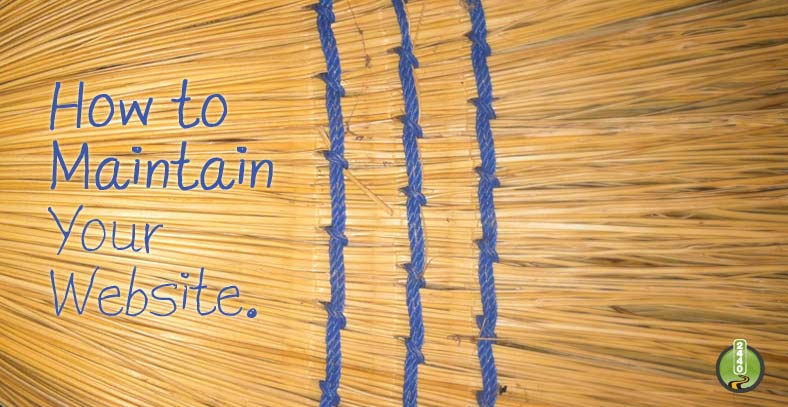How To Maintain Your Website
So you hired a web designer and got yourself a fantastic new website. What now?
Well, now it's time to actually use that site to attract new customers for your business. In order to do that, you're going to have to spend time (and possibly money) on two things: technical maintenance and content-specific maintenance.
Technical Maintenance
Website maintenance is a mostly technical job, but its importance cannot be overlooked if you want your business or organization to come across as reliable, trustworthy and professional. You can either perform the regular maintenance duties yourself or you can delegate them to a professional service provider (usually but not necessarily the same firm who designed your site).
However you decide to approach this task, these are the most crucial things website maintenance consists of:
- Testing. Making sure that all services on your website such as e-commerce, contact forms, surveys, event planners and content management systems are working as intended in all browser environments.
- Link Checking. Spotting and fixing broken links so your visitors don't get frustrated.
- Security and Updates. Updating the systems your website is making use of to the latest version and protecting your database against exploits and hackers.
- Backups. Safely backing up your data on a regular basis to ensure you can get back on your feet just in case the worst happens and you lose everything.
- Statistics. Keeping an eye on your site's visitor statistics and tracking your results for strategic purposes.
Content-Specific Maintenance
Technical maintenance is not enough to entice your visitors to keep coming back to your site for more. Equally important are the following tasks. Note that most professional designers do not offer these kinds of maintenance tasks as a service (although some do). You can however delegate them to content creation firms or professional webmasters.
- Content Updates. Your visitors won't be coming back to your website if it never or hardly ever changes. Most people on the net are looking for information and it is your job as a webmaster to give it to them. A blog, a project portfolio or an internet store is unlikely to keep attracting new visitors if you don't put out new content on a regular basis.
- User Interaction. The ultimate goal of most business websites is to engage people. Every time you get an e-mail, comment, form submission, complaint or suggestion through your site, you should follow up on it by responding to the user. This establishes you as a business that cares about and listens to its customers.
- Web Services. Many websites allow visitors to buy products, book appointments or otherwise interact with them via a host of web services. Providing these services will require time and effort on your part. Note that this type of maintenance activity is hardly ever outsourced as it is an extension of a company's core activities.
Get Help Or Do It Yourself?
Website maintenance can be more time-consuming than you expect and several of the tasks (particularly the technical ones) are likely to require specific skills that you do not possess. As a result, most owners of business websites outsource the technical aspects of website maintenance whereas the other tasks tend to be kept in-house.
For more information about maintaining your website, we recommend that you contact your web designer. Virtually all design firms offer maintenance services and they can usually direct you to recommended content creator and/or webmasters you can hire to help you with the other maintenance tasks.
Good luck – and remember: if you are not maintaining and updating your website regularly, you're doing it wrong.


